Why Reputation is Important for Business and for People

Summary
- Having a good reputation is important for individuals and businesses because it can open doors to new opportunities and lead to increased revenue. A bad reputation can close doors.
- It’s important to manage reputation effectively because a bad reputation diminishes opportunities for both people and businesses.
- A good reputation is built on both reality and perception, with the latter being shaped by factors such as online reviews and social media.
- Building a business reputation involves actively promoting positive information and minimizing content with negative sentiment.
- A good reputation can lead to more business opportunities, better employee selection, higher company value, and lower marketing costs.
Contents
- Why is a good reputation important?
- Curating sentiment
- Benefits of a good reputation
- What contributes to a business’s good reputation?
- What online channels affect how a company is perceived?
- How to build a business reputation
- Who maintains a corporation’s reputation?
Effectively managing your reputation has become a crucial element of success in both your professional and personal life.
Why is a Good Reputation Important?
You probably know exactly why reputation is such a big deal today. You want your personal or your company’s reputation to have access to the best opportunities, and a bad reputation can prevent that. A great reputation will open doors to fantastic opportunities and (if you’re a business) unhindered access to your ideal client base.
Your reputation is the single most important aspect of your business. It affects everything from the number of followers on social media to your overall business revenue.
A positive reputation is important for individuals, businesses, and organizations alike. Since reputations are easily made and broken, actively managing your reputation is more important than ever.
There are several key reasons why a good reputation should be a top priority:
Trust and Credibility
A good reputation is the bedrock upon which trust and credibility are built. In the world of business and interpersonal relations, trust is a currency that holds immense value. When a person or an entity is deemed trustworthy, stakeholders — whether they are customers, partners, investors, or employees — are more inclined to invest time, money, and effort. Credibility, on the other hand, is the perceived authenticity and reliability of a person or institution. A credible business is one that consistently delivers on its promises, demonstrating competence and expertise in its field.
People inherently want to align themselves with those they can count on, and a positive reputation serves as a beacon, signaling that an individual or company is deserving of such trust. In an era where misinformation can spread rapidly and where businesses are scrutinized more than ever before, having a reputation that speaks to honesty signifies transparency and a commitment to ethical behavior. Integrity, a cornerstone of a good reputation, implies a steadfast adherence to a moral or ethical code. Businesses that operate with integrity not only do what is legally right but also what is morally just, even when no one is watching.
Reputation Enhances Competitive Advantage
A good reputation is an asset, providing a competitive edge for both businesses and individuals in the saturated market. For businesses, a solid reputation often translates to increased customer loyalty, higher stakeholder trust, and a stronger brand image. These elements collectively lead to preferential treatment in the marketplace, where consumers are more inclined to choose, endorse, and even pay a premium for products or services from a company they deem reputable.
Similarly, for individuals, a good reputation paves the way for better opportunities, be it in career advancement, partnerships, or social networks. In essence, a good reputation serves as a kind of validation, telegraphing reliability, consistency, and integrity. In a world overflowing with choices and information, this reputation-driven differentiation can be the deciding factor in attracting opportunities and achieving success.
Businesses with a Good Reputation Earn Higher Valuations
A good reputation can significantly influence a company’s valuation, acting as an intangible asset that bolsters its financial and market standing. When a company is perceived favorably in the eyes of stakeholders—ranging from customers and employees to investors and partners—it often enjoys enhanced customer loyalty, reduced operational risks, and a more favorable negotiating position with suppliers and collaborators.
This positive perception can lead to increased sales, reduced churn rates, and a greater willingness among investors to pay a premium for shares, anticipating stable or growing future returns. Furthermore, in the event of a financial market downturn or company-specific challenges, a robust reputation can provide a buffer, shielding the firm from extreme valuation drops as stakeholders remain more patient and confident in the company’s long-term prospects.
In essence, a strong reputation amplifies the inherent value of a business, making it more resilient and attractive.
Reputation Improves Customer Acquisition
Negative reputational content tends to reduce the efficiency of marketing campaigns. A good reputation is important for successful marketing and friction-free customer acquisition. When a company has a solid standing in the market, its marketing and public relations campaigns resonate more authentically, thereby ensuring higher engagement and conversion rates.
Companies with good reputations tend to receive more free organic promotion as satisfied customers become brand ambassadors, sharing their positive experiences through word-of-mouth, reviews, and testimonials. This grassroots advocacy is valuable, as prospective customers often place more trust in peer recommendations than in conventional advertising.
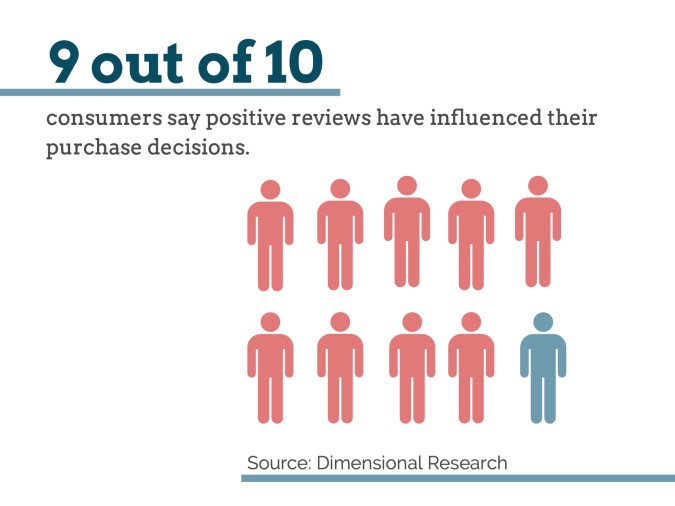
Media outlets are more inclined to spotlight a reputable company in a positive way, providing free publicity, which increases brand awareness. Investors see it as a sound investment, believing in its sustainability and future growth potential.
A good reputation amplifies every facet of marketing and outreach, paving the way for broader influence and easier customer onboarding.
Crisis Management is Easier to Deal With
A positive reputation acts as insurance during PR crises or scandals. Customers will give you the benefit of the doubt if you have built up goodwill and trust. However, a poor reputation amplifies any negativity or mistakes.
A positive reputation generates positive online content. That content rises in search results and, over time, creates a kind of reputational firewall when a crisis happens. This firewall in search results often reduces the visibility of negative content, especially that of certain types of search content such as press releases, and social media. Both of which tend to have less staying power in branded search results compared to other types of content.
Reputation management is a long-term investment that builds value, competitiveness and loyalty.
While a good reputation is hard to earn, it’s easily lost – so consistency and vigilance are key. In today’s transparent digital landscape, actively maintaining and protecting reputation is a business imperative because a crisis will almost certainly arise given time.
Character and Reputation: Reality vs. Perception
One of the many aspects of reputation deals with how others perceive you. This can be summarized as your overall character or how you are combined with your reputation, which is how others think you are.
One is objective, the other subjective. A person’s character is different than his or her reputation, and this holds true for brands as well.
When people trust you or your brand, they are more likely to recommend you to friends, repeat business with you, and even forgive mishaps or scandals.
91% of consumers trust online reviews as much as personal recommendations
The rewards of having a good online reputation are greater revenues, better relationships, and more opportunities. Consumers care about a company’s reputation and purchasers’ reviews.
Reviews are so important that businesses can’t survive in 2020 without them. We all do it. We read reviews.
We use reviews to choose which stores to shop at, where to eat breakfast, which apps to download, or even which doctor to visit.
Reviews are quickly outpacing word-of-mouth recommendations. A recent survey found that 91% of consumers trust online reviews as much as personal recommendations.
Here are a few more eye-opening statistics that show exactly why it is worth dedicating time and effort to maintain a positive online reputation.
Online search is the most trusted source of information about people and companies for 65% of internet users.
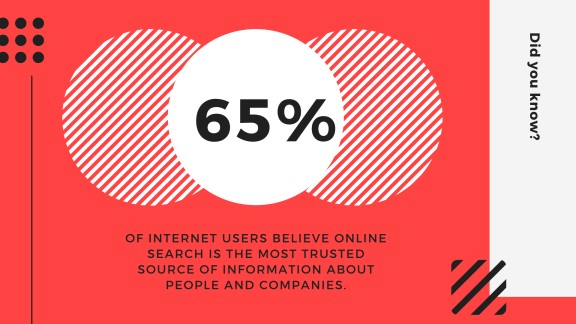
86% of consumers use the internet for research before making a purchasing decision.
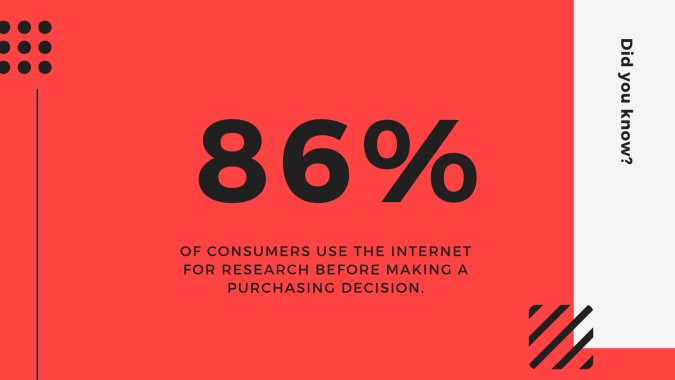
58% of Fortune 500 executives believe reputation management should be a core part of every organization’s marketing and branding strategy.
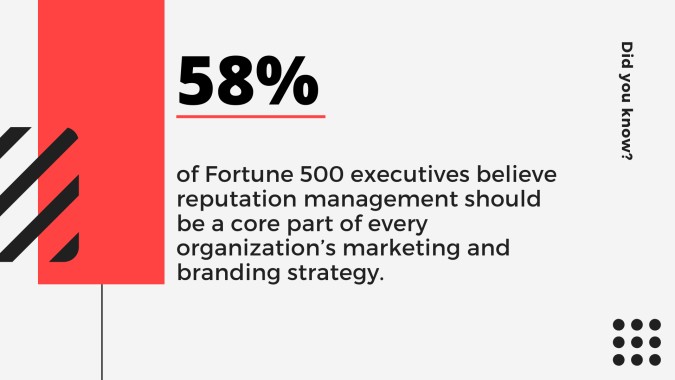
84% of marketers believe that building trust will be the primary focus of future marketing campaigns.
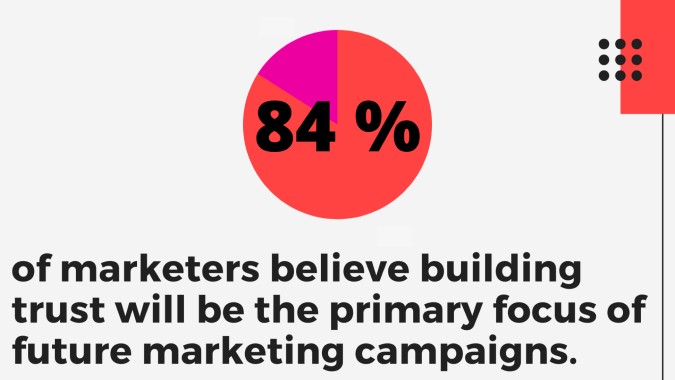
Curating Sentiment
Curating a positive reputation is different than simply leaving it up to the random opinions of others. Advertising and PR are examples of how brands try to curate their own company reputation. Coca-Cola tries to associate itself with young, healthy people through advertising.
Today, most people understand a brand’s reputation through the lens of search engines and social media, with a certain amount reserved for the physical world.
Online reputation management actively affects how a person or company is perceived by channeling positive information about a brand to increase positive sentiment while causing negative sentiment information to lose visibility.
Reputation Is an Activity
As the internet grows, your business or brand will be seen and judged.
If this is not attended to, competitors can take advantage of it, and some consumers may write complaints and leave negative reviews in the process.
But properly cared for, your reputation can flourish with new and better opportunities arising because of it.
“It takes 20 years to build a reputation and five minutes to ruin it. If you think about that, you’ll do things differently.”
– Warren Buffet
Reputation can stem from one person’s judgment via a negative review or complaint. Then this can initiate a chain reaction as it negatively sways the collective judgment of a person or business. This new “identity” (reputation) can become overwhelming and be all that consumers focus on.
When dealing with negative reviews, remember that the most important thing to do is to keep a level head throughout the whole process.
Just because someone left a negative review about you or your business online doesn’t mean that they will never consider giving you a second chance. It all depends on how you handle the situation.
Go ahead and respond politely and professionally. Consider these tips:
- Keep a level head
- Reply in a timely manner
- Respond publicly, privately, or both (depending on the situation)
- Flag reviews that violate Yelp’s content guidelines
Good Reputations Mean More Money and Lower Costs
There are also many subsidiary benefits to having a good reputation: businesses that enjoy a high standing may not have to spend a fortune advertising and marketing as their customers will frequently advertise their products and services by sharing with their friends.
Moreover, when it is endowed with a good reputation, an online business may be successful in avoiding lawsuits as a complainant may concede that the company’s excellent public reputation could thwart its chances of winning. This may well reduce the company’s legal costs, which in the case of smaller companies can prove so threatening.
Get Free Marketing (the Good Kind)
Another benefit of a positive online reputation is that the company or individual might be given free press articles and reviews for their services or goods. This can often involve publishing information on important company or personal events, as well as the launch of new products. And it is likely to drive the success of the business even more.
At the end of the day, your individual or company’s success will always be reinforced by an excellent online reputation, and there is no doubt that having extra resources to ensure that your reputation within your industry is first-class is the way to go.
Increase Profits
Brands with a favorable online reputation can also expect to see higher profits. If people like and trust your brand, they will likely purchase from you over less favorable options. A good reputation will also instill a perceived value in people, allowing you to charge more for your products. So you are not only able to sell more volume, but you can also probably do so at a higher price point.
Attract Better Employees
People want to work for companies that share the same values as them. Those values are generally part of a larger company culture reflected well in its reputation. Companies with positive reputations will attract qualified candidates more likely to stick around longer and offer more long-term contributions. On the other hand, companies with negative reputations may struggle to fill open positions.
What Contributes to a Business’s Good Reputation?
A business reputation comprises the total of what consumers communicate that they feel about the company. They may feel a certain way, but if they don’t communicate it, then it doesn’t affect their reputation.
Much like with personal reputations, a positive corporate reputation can result in many benefits for your company. To name a few:
- Increased revenue and stock prices
- Decreased churn rate
- Increased customer lifetime value
- Better job candidates and employees
Reputations can change quickly, so that is why it is so important to dedicate time, budget, and thought to building and maintaining your business’ reputation.
There are so many factors at play:
- Online reviews
- Word of mouth
- Articles
- Blog posts
- Social media
These can all significantly impact how your company is perceived – for better or worse.
Do search results reflect the truth?
Unfortunately no.
Truth is less relevant to a reputation on the internet than social strength. This is unfortunate because companies that do not manage how they are seen to some degree can be at the mercy of opinions that are not entirely accurate. One of the aims of reputation protection is to promote accuracy.
Consumers take action and buy products and services in response to the readily available information. As your company’s reputation is based on the information available online, ensuring that you have a sterling reputation and no negative copy or inaccurate information about your company or what you offer is absolutely essential.
What Online Channels Affect Reputation?
Channels You Control
Your online reputation involves your company website, business blog, and your engagement with social media. These things you control, but the rest you generally do not.
Channels You Can’t Control
Consumer’s social media channels, websites, and blogs have an impact, as do review sites, videos, and more. Taking control of, or at least influencing, these media channels can reset the board for a company.
What people think of your company does not only involve the way in which your customers and target audience feel about your brand. It is also essential to be concerned about a broader sphere that includes your employees, community members, competitors, and others.
Your trade name impacts how your target group interacts with your company; however, the reputation associated with your business impacts how your encompassing network interacts with your company.
How do you build a business reputation?
You can implement strategies and activities that develop an accurate and positive perspective of your company among third parties. Remember that your company’s reputation extends far beyond the portion of your brand, services, and products you control.
Influencing the Influencers
This is where relationships with influencers in your industry are a big help. The better your reputation becomes, the better it tends to continue to grow. But the inverse is also true.
The broken window theory applies to reputation as well. When a company has a damaged reputation, it can easily snowball downhill and become exponentially worse.
How to Monitor Business Reputation
You can use reputation monitoring systems like TalkWalker, Google Alerts, SEMRush, and others; unlike building your company’s reputation, which centers on what you want people to write and think about your company, reputation monitoring concerns what individuals are saying about it.
Keeping tabs on your reputation concerns maintaining a close watch on the platforms consumers use to engage with other people about your company and the platforms they use to engage with your company. This will enable you to make adjustments so that you can maintain an excellent and accurate image of your company and what you offer.
What Does Reputation Involve?
According to the Davies and Miles corporate reputation review entitled, Reputation Management: Theory versus Practice, reputation in terms of business, involves three things:
- How others see the business
- Who the business really is
- What the business communicates about itself
Managing a business reputation necessitates the alignment of these three elements. When just one of these is out of balance, the company’s entire reputation can come crashing down.
Here is a closer look at the factors that shape a corporation’s reputation.
- Visual cues: name, logo, and all of the imagery related to your company or brand.
- Mission, vision, or philosophy: these elements are the guiding light of a company’s internal culture and generate a ripple effect when it comes to corporate reputation.
- The behavior of members within the organization: what people are saying or writing. Articles, word of mouth, news, social media, and online reviews.
- The success of the business: for example, a spot on the Fortune 500 list will contribute to a positive reputation.
Who Maintains a Corporation’s Reputation?
The simple answer: everyone.
Clearly, corporate reputation is a complicated machine. So, who is in charge of maintaining it?
According to a 2005 study by Rosa Chun, senior lecturer at Manchester Business School, it is unusual to find an internal reputation management department that is directly responsible for managing corporate reputations. Instead, it is often a shared effort, with marketing and communications handling the external perceptions and human resources managing the internal culture. In addition to this, many companies that understand the priceless value of their reputation outsource their reputation management to firms that specialize in this field.
Creating, curating, and maintaining a positive reputation for a corporation is no easy task, but one of the most important facets of human psychology is consistency. Research by Roger Martin of the Rotman School of Management has shown that a customer’s loyalty to a company or brand relies more on familiarity than true, organic “trust.”
Customers love to do what feels comfortable; companies that are too quick to change their identity in the face of a PR disaster may be more likely to lose customers in the long run.
A better approach is often a slow and steady strategy that is focused on rebuilding trust through multiple channels.
About the author
Kent Campbell is the chief strategist for Reputation X, a San Francisco Bay Area-based online reputation management services firm. He has over 15 years of experience with SEO, Wikipedia editing, review management, and online reputation strategy. Kent has helped celebrities, leaders, executives, and marketing professionals improve the way they are seen online. Kent writes about reputation, SEO, Wikipedia, and PR-related topics.
–
Tags: Online Reputation Management Services, Reputation Management.
